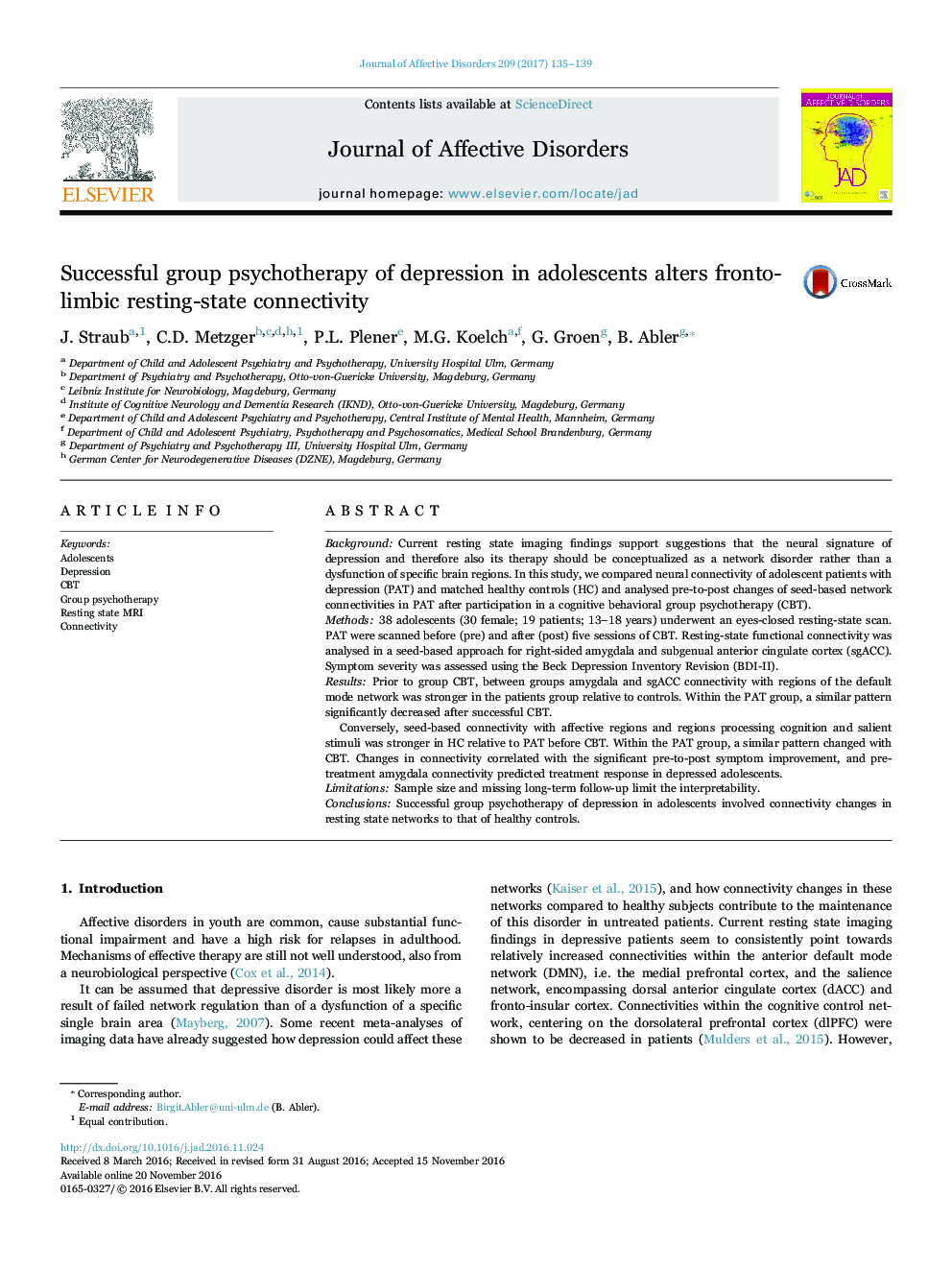| Article ID | Journal | Published Year | Pages | File Type |
|---|---|---|---|---|
| 5722277 | Journal of Affective Disorders | 2017 | 5 Pages |
â¢Affective and default mode regions show higher connectivity in adolescents with MDD.â¢Short-term group psychotherapy decreased connectivity between affective and default mode regions.â¢Amygdala connectivity changed along with depression severity.â¢Connectivity before treatment predicted therapy outcome.
BackgroundCurrent resting state imaging findings support suggestions that the neural signature of depression and therefore also its therapy should be conceptualized as a network disorder rather than a dysfunction of specific brain regions. In this study, we compared neural connectivity of adolescent patients with depression (PAT) and matched healthy controls (HC) and analysed pre-to-post changes of seed-based network connectivities in PAT after participation in a cognitive behavioral group psychotherapy (CBT).Methods38 adolescents (30 female; 19 patients; 13-18 years) underwent an eyes-closed resting-state scan. PAT were scanned before (pre) and after (post) five sessions of CBT. Resting-state functional connectivity was analysed in a seed-based approach for right-sided amygdala and subgenual anterior cingulate cortex (sgACC). Symptom severity was assessed using the Beck Depression Inventory Revision (BDI-II).ResultsPrior to group CBT, between groups amygdala and sgACC connectivity with regions of the default mode network was stronger in the patients group relative to controls. Within the PAT group, a similar pattern significantly decreased after successful CBT.Conversely, seed-based connectivity with affective regions and regions processing cognition and salient stimuli was stronger in HC relative to PAT before CBT. Within the PAT group, a similar pattern changed with CBT. Changes in connectivity correlated with the significant pre-to-post symptom improvement, and pre-treatment amygdala connectivity predicted treatment response in depressed adolescents.LimitationsSample size and missing long-term follow-up limit the interpretability.ConclusionsSuccessful group psychotherapy of depression in adolescents involved connectivity changes in resting state networks to that of healthy controls.
